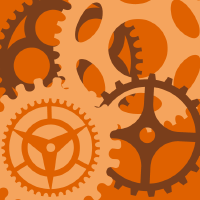Topic Editors


Multi-scale Modeling and Optimisation of Materials
Topic Information
Dear Colleagues,
More than a century ago, manufactured materials’ fatigue started to be investigated, while material performance evaluation was rethought as a result of the introduction of new technical materials, testing techniques, and computer methodologies. By combining cutting-edge sensor technology with real-time photos of material behavior, it became possible to gain a better understanding of the mechanisms causing damage on a sub-microscale. Meanwhile, incorporating computational methods into multi-scale modeling techniques, continuously enhanced by an ever-increasing computer power, resulted in further insights into the optimization and design of resilient materials. The use of data-driven algorithms allowed for the successful completion of complex structure–property interactions, which would have been computationally costly had physics-based models been used alone. Although substantial research has been conducted on the topic, the materials science community is in even greater need of interdisciplinary methods for multi-scale modeling and optimization. Therefore, we welcome notable and pioneering researchers to participate in our endeavor to advance the current state of the art in this field, within the scope outlined below.
Dr. Mustafa Awd
Prof. Dr. Frank Walther
Topic Editors
Keywords
- multi-scale modeling
- material optimization
- computational methods
- fatigue analysis
- sensor technology
- real-time monitoring
- sub-microscale mechanisms
- data-driven algorithms
- structure–property interactions
- interdisciplinary research
Participating Journals
| Journal Name | Impact Factor | CiteScore | Launched Year | First Decision (median) | APC | |
|---|---|---|---|---|---|---|

Applied Mechanics
|
- | 2.3 | 2020 | 21.4 Days | CHF 1200 | Submit |

Applied Sciences
|
2.5 | 5.3 | 2011 | 17.8 Days | CHF 2400 | Submit |

Materials
|
3.1 | 5.8 | 2008 | 15.5 Days | CHF 2600 | Submit |

Polymers
|
4.7 | 8.0 | 2009 | 14.5 Days | CHF 2700 | Submit |

Solids
|
2.4 | 3.4 | 2020 | 20.5 Days | CHF 1000 | Submit |

Metals
|
2.6 | 4.9 | 2011 | 16.5 Days | CHF 2600 | Submit |

MDPI Topics is cooperating with Preprints.org and has built a direct connection between MDPI journals and Preprints.org. Authors are encouraged to enjoy the benefits by posting a preprint at Preprints.org prior to publication:
- Immediately share your ideas ahead of publication and establish your research priority;
- Protect your idea from being stolen with this time-stamped preprint article;
- Enhance the exposure and impact of your research;
- Receive feedback from your peers in advance;
- Have it indexed in Web of Science (Preprint Citation Index), Google Scholar, Crossref, SHARE, PrePubMed, Scilit and Europe PMC.

